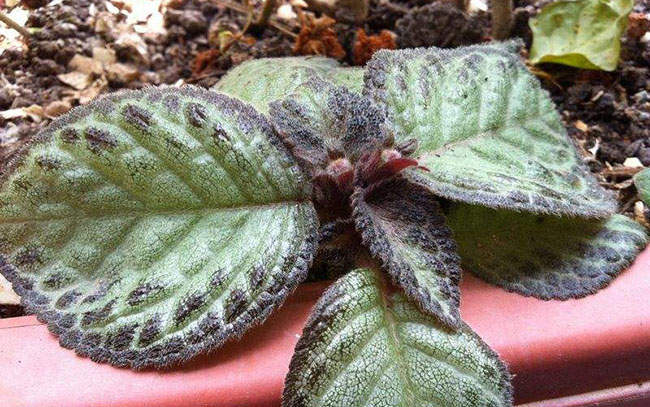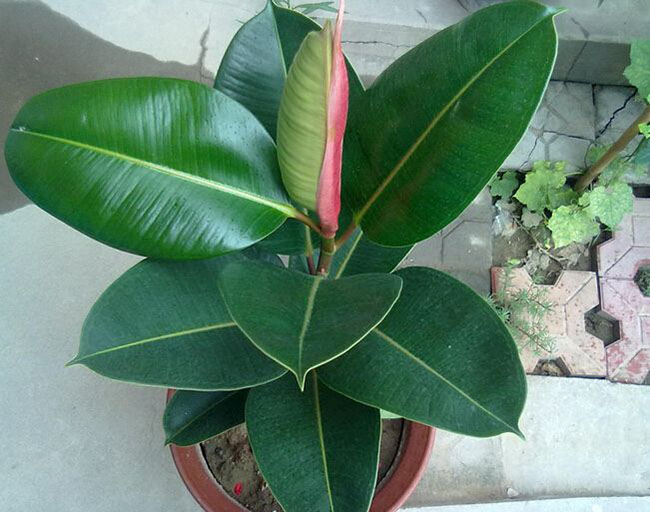Culture methods and matters needing attention of Tripterygium wilfordii
Morphological characteristics of Tripterygium wilfordii
Branch
Tripterygium wilfordii is a herbal vine. Branchlets Terete, longitudinally ribbed, often glaucous, glabrous. Tendrils 2-branched, interspersed with leaves at intervals of 2 segments.
Leaf
The leaves of Tripterygium wilfordii are cordate, 5-13 cm long and 4-9 cm wide, apex acute or acuminate, base cordate, margin 9-12 sharp serrations on each side, green above, light green below, both sides glabrous; basal veins 3-5, midrib with 3-4 pairs of lateral veins, reticulate veins inconspicuous; petiole 2.5-7 cm long, glabrous. Stipules brown, membranous, reniform, 5-6 cm long, 2-3 cm wide, glabrous.

Flowers
Inflorescences terminal or opposite to leaves, secondary branches 4-5 set to form umbels; peduncle 1-3 cm long, glabrous; pedicels 2-4 mm long, almost glabrous; buds ovoid, ca. 4 mm high, apex obtuse; calyx cup-shaped, margin entire or undulate, glabrous; petals 4, ovate-triangular, ca. 3 mm high, glabrous; stamens 4, anthers ovate-elliptic, slightly longer than width or nearly equal in length. The disk is obvious, slightly 4-lobed; the lower part of the ovary is connate with the disk, the style is subsubulate, and the stigma is not obviously enlarged.
The flowering period of Tripterygium wilfordii is from July to October.
Fruit
The fruit of Tripterygium wilfordii is obovoid, 0.8-1.2 cm long and 0.4-0.8 cm wide, with 1 seed, the seed is Obovate, the top is round, the base has a short beak, the surface is sparse and protruding rib, the navel is no different from the seed ridge at 1 inch 4 below the back of the seed, the seed ridge is prominent, the ridge is prominent in the abdomen, up to 1 inch 3 in the upper part of the seed, and the lateral depression is in the shape of a groove, reaching the upper part of the seed. The fruit period of Tripterygium wilfordii is from November to May the following year.
Distribution area of Tripterygium wilfordii
Baifen vine is produced in Guangdong, Guangxi, Guizhou and Yunnan. Tripterygium wilfordii is also distributed in Vietnam, the Philippines, Malaysia and Australia.
Ecological habits of Tripterygium wilfordii
The white powder vine likes a warm, moist and sunny environment. White rattan grows in sparse forests in valleys or thickets on mountain slopes, 100-1800 m above sea level.
Propagation method of Tripterygium wilfordii
Tripterygium wilfordii usually chooses annual semi-lignified tip or side branches as cuttings in spring, summer and autumn. Cut 10 Mel 15 cm long, cut off half of the lower leaves and insert them into a mixture of vermiculite or peat soil and coarse sand at a temperature of 25 Mel 30 ℃. It can take root in about 10 days. You can also insert cuttings in water (pay attention to keeping the water clean) and plant in pots after rooting.
Culture method of Tripterygium wilfordii
Soil fertilizer and water
3 portions of garden soil and 2 portions of rotten leaf soil can be used as substrate, peat soil, rotten leaf soil plus 1 Zhe 4 river sandy soil and a small amount of base fertilizer can be used as substrate for pot cultivation. Old plants cultivated for many years can be combined with re-pruning to change pots before a large number of new buds grow in early spring. When changing pots, remove part of the old roots and old culture soil, and use new soil to plant again. Liquid fertilizer was applied every two weeks during the growing season.
Watering method
To dry and wet, it is best to spray the leaves every day to facilitate growth; winter watering should be slightly sprayed to prevent leaf curls and red spiders; other seasons should also often keep the basin soil moist.
Light temperature
The white powder vine is suitable for bright light environment and can also be adapted in darker places; avoid direct sunlight, such as strong light, there will be brown spots. Generally, it can grow at room temperature and can still be seen in the environment of 10 ℃ and 16 mol. But when the winter temperature is lower than 5 ℃, it is easy to catch cold, and the leaves turn yellow, lose luster, and even fall off.
Family cultivation
Clean the leaf surface every 3 weeks to remove smoke and keep the leaf bright. The plant tends to grow fast and its branches are too long. It is often necessary to prune disorderly branches and guide them to stretch to maintain a good plant shape.
Disease control of Tripterygium wilfordii
Powdery mildew
The common disease of Tripterygium wilfordii is powdery mildew, most of which are caused by excessive watering and poor ventilation. It is mainly harmful to leaves. The leaves produce nearly round white powder spots, which converge into a large area of powdery powder with inconspicuous edges, which are covered with white powdery mildew layer, namely mycelium, conidiophores and conidia. In severe cases, the leaves are withered and curled. In the later stage, the white powder became grayish white.
Prevention and cure method
It usually occurs in summer, and the disease is common and severe in cool, dry climates and plants that grow weak in damp areas. It is easy to form a closed shell with little rain and drought in autumn.
1. Rational use of fertilizer, avoid close planting, improve field ventilation conditions.
two。 In the early stage of the disease, spray 15% triadimefon (triadimefon) wettable powder 1000-1500 times, or 20% triazole copper EC 2000 times.
Culture method of Tripterygium wilfordii
Tripterygium wilfordii usually chooses annual semi-lignified tip or side branches as cuttings in spring, summer and autumn. Cut 10-15 cm long, cut off half of the lower leaves and insert them into a mixture of vermiculite or peat soil and coarse sand at a temperature of 25-30 ℃. It can take root in about 10 days. You can also insert cuttings in water (pay attention to keeping the water clean) and plant in pots after rooting.
3 portions of garden soil and 2 portions of rotten leaf soil can be used as substrate, peat soil, rotten leaf soil plus 1 Zhe 4 river sandy soil and a small amount of base fertilizer can be used as substrate for pot cultivation.
Old plants cultivated for many years can be combined with re-pruning to change pots before a large number of new buds grow in early spring. When changing pots, remove part of the old roots and old culture soil, and use new soil to plant again. Liquid fertilizer was applied every 1-2 weeks in the growing season.
Summer watering should be dry and wet, it is best to spray to the leaves every day to facilitate growth; winter watering should be slightly sprayed to prevent leaf curls and red spiders; other seasons should also often keep the basin soil moist. The white powder vine is suitable for bright light environment and can also be adapted in darker places; avoid direct sunlight, such as strong light, there will be brown spots. It can grow at room temperature and can still be seen in the environment of 10-16 ℃. But when the winter temperature is lower than 5 ℃, it is easy to catch cold, and the leaves turn yellow, lose luster, and even fall off.
Under home cultivation, the leaves are cleaned every 2-3 weeks to remove smoke and keep the leaves bright. The plant tends to grow fast and its branches are too long. It is often necessary to prune disorderly branches and guide them to stretch to maintain a good plant shape.
1 morphological characteristics: grape family, Tripterygium. Perennial evergreen woody vines. It can be up to 3 meters long. Surface glossy, abaxially sparsely pilose, inflorescences axillary, flowers greenish, not exposed. 2 growth habits: originally from tropical Central and South America. At present, it is cultivated all over the world. Sex likes to be warm, suitable for semi-overcast and humid environment. Tripterygium wilfordii has strong adaptability and can withstand the indoor environment of weak light and low humidity. 3. Propagation method: it is easy to survive with softwood cuttings. 4. Cultivation and management: strong adaptability to the environment, no choice of soil, exuberant growth, extensive management. It should be placed in a semi-shady place and can grow normally in a darker environment. Watering in the growing season should grasp the principle of wet and dry, and should not be overdone frequently. The amount of water in winter is generally used to keep the basin soil moist properly. The climbing and shaping of branches can be done according to one's own wishes. Change the basin once every spring to cut off some of the old roots and replace the newly cultivated soil in order to keep healthy and healthy. Tripterygium wilfordii is easy to be damaged by red spider and powdery mildew, so we should pay attention to strengthen management and prevention.
- Prev

Cultivation and propagation of shade-loving flowers
Shade-loving flowers characteristic of perennial evergreen herbs. Shade-loving flowers plant short, only a dozen cm high, with more creeping sex, more branches. Leaves opposite, elliptic, dark green or tan, margin serrated, base cordate; leaf surface wrinkled and densely velutinous, silvery-white midvein from base to tip
- Next

Culture methods and propagation of Indian rubber trees
Indian rubber tree Indian rubber tree is a mulberry banyan tree, up to 20-30 meters high, DBH 25-40 cm; bark gray-white, smooth; epiphytic when young, branchlets stout. Achene ovoid, with small tumors on the surface, style long, persistent, stigma dilated, subcapitate. Flowering winter
Related
- Fuxing push coffee new agricultural production and marketing class: lack of small-scale processing plants
- Jujube rice field leisure farm deep ploughing Yilan for five years to create a space for organic food and play
- Nongyu Farm-A trial of organic papaya for brave women with advanced technology
- Four points for attention in the prevention and control of diseases and insect pests of edible fungi
- How to add nutrient solution to Edible Fungi
- Is there any good way to control edible fungus mites?
- Open Inoculation Technology of Edible Fungi
- Is there any clever way to use fertilizer for edible fungus in winter?
- What agents are used to kill the pathogens of edible fungi in the mushroom shed?
- Rapid drying of Edible Fungi

